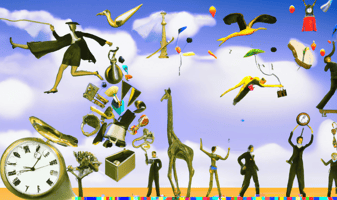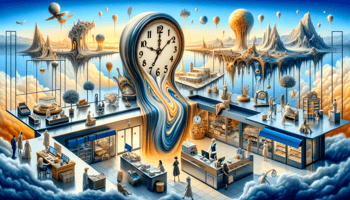Discover the top trends shaping the retail customer experience in 2024 and learn how to...
Revolutionising Retail Customer Experience: Strategies for Success

The retail industry has undergone a significant transformation with the rise of digital transformation. In the past, the success of retailers relied on creating impeccable physical spaces that catered to shoppers' needs. However, with the emergence of the digital age, the customer experience has become more complex. The battleground for customer loyalty has expanded and now includes websites, apps, newsletters, and physical spaces. To thrive in this fiercely competitive arena, retailers must ensure consistency across all touchpoints, regardless of whether customers engage online or in-store. Merchandising, purchasing processes, and employee assistance are crucial elements that can make or break a retailer's reputation.
The Power of Customer Experience
Research shows that customer experience (CX) is the key to building brand loyalty, with 95% of consumers considering it essential. CX is formed through various interactions, from the first contact to follow-ups after purchase, and reflects the customer's perception of an organisation or brand.
In today's digital era, where online engagement often precedes physical visits, a company's digital marketing plays a critical role in shaping CX. A seamless online experience is the foundation upon which loyalty is built, while weak digital marketing can erode it.
Two metrics, Customer Satisfaction Score (CSAT) and Net Promoter Score (NPS) provide valuable insights into how customers view products and services. CSAT measures overall satisfaction, while NPS assesses the likelihood of customers recommending a brand to others. To foster brand loyalty, retailers must monitor both metrics closely, with NPS being essential as it reflects customers' willingness to become brand advocates.
Distinguishing Customer Experience from Customer Service
It's common for businesses to use the terms "customer experience" and "customer service" interchangeably. However, they are not the same thing. Customer service refers to direct interactions between a company and its customers, typically involving issue resolution or answering queries at a specific time.
On the other hand, customer experience encompasses a customer's entire journey when interacting with a company, including factors such as product quality, pricing, ease of use, and delivery speed. CX also considers the emotional connection customers develop with a brand.
In today's world, customers interact with businesses primarily online, which means that a company's digital marketing strategy heavily influences CX. If a company's digital presence is lacking, it can negatively impact the customer experience. Therefore, mastering the digital realm is crucial for modern retailers.
Crafting a Consistent Customer Journey
Creating a consistent customer journey is crucial for building long-term relationships with customers. According to research, 65% of consumers become repeat customers when they have positive experiences throughout their journey. Inconsistent experiences can breed frustration and drive customers away to competitors.
To ensure consistency, it is essential to map out the customer journey and divide it into segments such as awareness, consideration, purchase, retention, and advocacy. This will help to identify where each customer is in their journey and provide targeted support.
To enhance the customer experience, leverage video content using video editing software at each stage. This could include how-to videos, product unboxing demos, and troubleshooting guides. These types of videos can inform and emotionally connect customers with your brand. Additionally, video analytics can provide insights into how customers interact with your content, which can be used for personalisation.
Embracing Modern Technology
The present-day technology has opened up a world of unmatchable prospects for retailers. AI-powered retail chatbots provide prompt and precise product recommendations, improving customers' shopping experience. Augmented reality shopping lets customers virtually try out products before making a purchase, giving them more confidence in their choices. Personalisation technology customises the shopping experience based on individual preferences, increasing conversion rates.
Measuring Customer Satisfaction
Ensuring customer satisfaction is crucial for achieving business success. One way to gather feedback and assess customer satisfaction is through regular surveys, focusing on calculating the Net Promoter Score (NPS). A high NPS can significantly boost your brand's reputation and customer advocacy, a key factor for success in today's highly competitive market.
Implementing a Loyalty Programme
Customer loyalty programmes have been proven to be an effective strategy to increase customer retention and enhance profits. Studies have shown that a mere 5% increase in customer retention can lead to 25% to 95% profit boosts. These programmes reward loyal customers, encouraging positive experiences and higher satisfaction levels.
The Future of Retail CX
The retail industry is experiencing a significant transformation, with a greater emphasis on enhancing customer experience. Over 45% of businesses anticipate customer experience being their primary concern for the next five years. The future of retail is driven by data-based marketing approaches, customised experiences, and AI-powered chatbots that suggest personalised recommendations.
Wrap up
The retail customer experience world is changing rapidly, fuelled by technological advancements and customers' increasing expectations. To succeed, providing a smooth, personalised and consistent journey for online and in-store customers is crucial. To thrive in today's environment, it is essential to prioritise customer experience, become proficient in digital marketing, adopt modern technology, and track customer satisfaction levels. The businesses that can deliver exceptional experiences and keep customers coming back will be the ones that succeed in the future.




